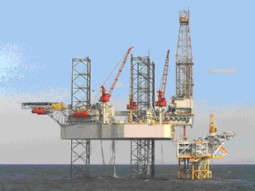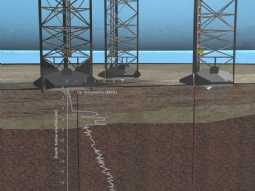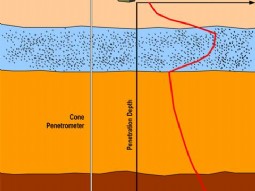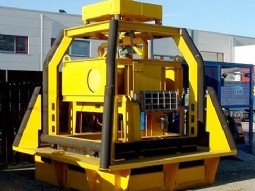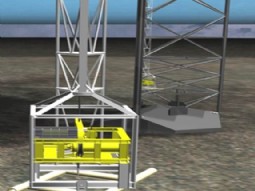April 2008: Partnership of A.P. van den Berg and Keppel FELS
New approach for seabed characterization towards safe installation of jack-up rigs
A.P. van den Berg and Keppel FELS (Singapore) are collaborating to enhance the safety of jack-up rig installations by integrating probes into jack-up rig legs designed to characterize seabed properties prior to installations.
Keppel FELS is part of Keppel Offshore & Marine’s global network of 20 yards and the world’s leader in the design and construction of jack-up rigs. The partnership with A.P. van den Berg started in order to develop an integrated soil testing device for jack-up rigs.
Jack-up rigs are mobile and consist of a floating platform supported by 3 to 4 independent legs. It can be deployed in shallow waters up to 120 m deep and installed by jacking down their legs to stably rest in the seabed. Structural damage of the rigs during installation occasionally occurs due to sliding, punch-through or rapid penetration of any of the legs which can be attributed to poor geotechnical information available at the site, among other factors. Availability of seabed properties at the installation site and the subsequent leg penetration assessment are therefore crucial for safe installation of a jack-up rig.
To assure availability of geotechnical information and to minimize uncertainties and risks associated with jack-up installations, seabed-probing equipment developed by A.P. van den Berg will be integrated into jack-up rigs. The technology applied in this process is based on the ROSON®- the proven soil inspection equipment for Cone Penetration Testing (CPT), developed by A.P. van den Berg. Besides in the relatively shallow seas where jack-up rigs are deployed, a ROSON® can be used in water depths of up to 2,000 meters. The ROSON® is distinguished by its durability, accuracy, ease of operation and its ability to perform in harsh environments.
Method
From the jack-up rig, operators will be able to profile the seabed underneath each leg and identify potential installation hazards using the integrated seabed-probing equipment. Any shift in final rig location or offset with respect to existing soil boreholes location can be addressed immediately with this approach. This accurate information is very crucial especially when lateral seabed variability is anticipated at the site.
In this application, soil investigation is carried out while the spudcans are pinned at the seabed. As soon as the legs are seated stably, the seabed probing device, which can be either fixed or made retrievable along the legs, immediately operates and captures seabed penetration resistances. From there, strength characteristics of the seabed can be derived and further interpretations can be made.
In collaboration with the Centre for Offshore Foundation Systems (COFS) at the University of Western Australia, special software is designed for this application. It interprets the measured values with which potential installation hazards are identified and prediction of leg penetration is derived with various levels of analysis. Together with the existing geotechnical information, this on-site assessment provides a strong basis for the jack-up operators to decide preventive measures when potential leg-installation hazards are present.
Keppel FELS and A.P. van den Berg foresee a developing preference by oil and insurance companies for this type of jack-up rigs with integrated probing equipment as an industrial standard. Existing jack-up rigs can be retrofitted with this CPT technology during routine maintenance at their shipyard. This new approach, jointly patented by both companies, is introduced to the market in the second half of 2009.
